One of the funnest things about camping and hiking is acting like a kid again and not caring if you get dirty. We loved it as children, and part of the fun of nature is having a different etiquette then we would indoors. But there comes a time, when we need to get those dirty clothes clean again. Here are a few simple methods to do it while camping and hiking.
Use a breathable storage bag for keeping your dirty clothes in. I use a down sleeping storage bag, but any large laundry bag will due. I’ve used a dry bag for my dirty clothes, but odor builds up in the clothes because they can’t breathe in an airtight bag.
This won’t be a big deal if you’re just storing them for a trip home as we do for the kid’s clothes from a beach day. On a long camping trip, you might have to wash my clothes a few times if you’re packing light.
This is important before we get started. Even biodegradable soaps and cleansers shouldn’t be used in a natural water source. You’re contaminating the water for yourself, everyone else, and the animals that live and drink from it. To wash yourself, your laundry or your dishes, carry water 200 feet away from streams or lakes and use small amounts of biodegradable soap (a little goes a long way). Then pour wastewater into a cat hole 6 to 8 inches deep.
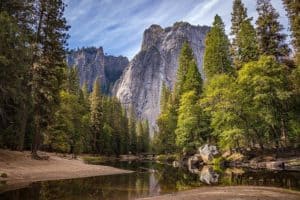
While camping, it’s best to wash yourself and clothes in a central location. This isn’t always possible when backpacking, but it’s a good rule if you’re staying in the same location for multiple days. You’re affecting the area you’re in so moving washing locations affects a greater number of areas. Washing in one area minimizes contamination elsewhere.
Dry Bags – 8 ounces (10 liters)
Hand washing your camping clothes is easy with a dry bag. The chances are that you already have a dry bag if you’ve been camping before so buying new gear isn’t necessary. Choose the right size dry bag for the number of clothes that needs cleaning. A large 20-liter will fit almost anything you need. A common size dry bag is 5-liter, this size is fine, but you might have to do a few loads.
- Add dirty clothes then fill the dry bag halfway with clean water. As your adding water, make sure the bag is sable and propped up.
- Add your choice of soap. A small amount is all that’s needed. I use Dr Bronner’s castile soap on Amazon here, but your favorite camping biodegradable soap will do.
- Add a smooth rock or dog toy for agitation. You can skip this step if your clothes aren’t that dirty.
- We aren’t going to close the dry bag the correct way like in our article here, instead leave the air inside and roll down 3 times. This will allow room for agitation.
- Once closed, lay the dry bag on its side and roll or shake with your arms for a few minutes. Shake and knead the bag as needed.
- Once done cleaning, carry the dirty water at least 200 feet away from streams or lakes. The proper way of disposing of the dirty water is to pour it into a cat hole 6 to 8 inches deep.
Wring-out your clothes and let them hang to dry somewhere. If your hiking on the trail, safety pinning them on your backpack is a great way to let them dry and look like a hobo! You can also hang them to dry with a portable clothesline. They are cheap and small enough to keep in your backpack, this Sea to Summit Lite Line Clothesline only weighs 3.1 ounces. Check the current price of this clothesline on Amazon here.
Drying With a Towel – 7.2 ounces
After you wring out your clothes dry them is with a microfiber cloth towel if you’re not going to hang them on a clothesline. Lay the towel down flat and put one article of clothing on top. Roll up the towel tightly and squeeze while rolling. Unroll, and you’ll see the towel soaked up a lot of the water. The reason for this is that the microfiber towel will dry much faster than a cotton t-shirt. We sell a large microfiber towel that’s antimicrobial that works well with this drying method. Check to see the current price of our microfiber towel on Amazon here.
Dry bags can be used for all sorts of things. I go into detail about alternative dry bag uses in this article here.
Wash Clothes With a Ziploc Bag
If you have just a few small things to clean and don’t have a dry bag, a large gallon Ziploc bag will work. This is a great way to save some money over a dedicated camping washing bag. It’s a good idea to have a few extra bags with you while hiking anyways. If you don’t want to risk ripping the Ziploc add a strip of duct tape around the seams of the bag. Cleaning your clothes with the Ziploc bag method is a similar process to the dry bag method.
Collapsible Washing Bucket – 10.5 ounces
If you have a large number of clothes to wash look into a dedicated collapsible water container. These are specifically made to take camping and a great way to let dirty clothes soak as long as needed. The Friendly Swede makes a collapsible container like this, but overall I prefer the dry bag method. Also, when it’s full of water, it’s awkward to carry while a dry bag is great at transporting water. Check the current price of this collapsible water container on Amazon here
Scrubba – 5 ounces
Scrubba washing bag was Kickstarter funded in 2012. While they now have the Scrubba mini, I’d recommend getting the larger one because it only weighs a few ounces more. This is a dedicated bag for washing camping and hiking clothes or just to use while traveling. It’s a lot like a dry bag except it has a flexible washboard and gripping surface on the inside.
The newer models also have a better valve on the side for draining water and deflating the bag. The valve on the original model was hard to open if your hands were wet. It doubles as a dry bag, but one downside is it’s thin, unlike heavy-duty PVC Tarpaulin dry bags. For ultralight hiking, it’s excellent, but you limit the mini alternative ways a dry bag could be used.
Check the current price of the dedicated wash bag Scrubba on Amazon here.
Laundreez – 5.3 ounces, 10 liters
Laundreez Portable Clothes Washer is a lot like a normal dry bag except it’s clear. Unlike the Scrubba theirs no washboard so if you have stubborn stains your clothes will be harder to wash. I do like the large-cap for draining and adding water for an extra rinse.
The included mesh bag is a nice touch, as well. If you’re going to buy a dedicated wash bag stick to the Scrubba, Laundreez is just an expensive dry bag because it doesn’t include a washboard.
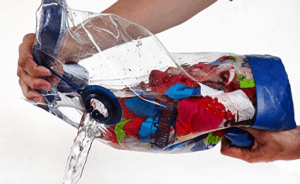
It’s not as good as the Scrubba, but you might want to cheap it out. Currency the Laundreez is cheaper than the Scrubba, check the current price on Amazon here.
Allurette Washer – 4 ounces, 9 liters
Another Scrubba alternative is the Allurette Washer. This is made from a lightweight fabric with a washboard on the inside, unlike the Laundreez. It also has an air valve which is the biggest upgrade from using a regular dry bag.
Looking at their website, they really market this towards women working out in a gym, even down to little hearts as the washboard surface. I included it here for camping because I see no reason why it wouldn’t work outdoors. Compare the Allurette washer price to the Scrubba on Amazon here.
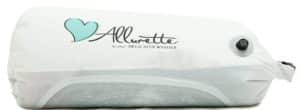
Best Camping Soaps
Dr Bronner’s Pure Castile Liquid Soap
I’ve already mentioned I like to use Dr Bronner’s Pure Castile Liquid Soap. It’s affordable, 100% biodegradable, contains no synthetic preservatives, detergents, or foaming agents. It’s great for washing clothes, but I also use it for my hands and face while camping. For washing my face in the morning, I get my hands wet then use 2 or 3 drops of soap. If you don’t like the liquid or don’t want to deal with something potency leaking inside your pack, they make it in bar form as well, on Amazon here.
Camp Suds
Camp Suds has been around since 1968, and it’s the most popular soap on the trail. Like Dr Bronner’s Camp Suds is an all-purpose cleaning that’s fine on your clothes as well as your hands and face. I prefer unscented, but the one I use has a mild pine scent that smells good. I find that the small bottle of Camp Suds to be durable, I’ve had the bottle in my pack for years, and it’s never leaked.

I prefer Dr Bronner’ts Pure Castile Soap, but you can’t go wrong with either of these two. Theirs a few different camping soaps on the market that I’m slowly trying out. I’ve heard good things about Sea To Summits Wilderness Wash, but I haven’t tested it out for myself.


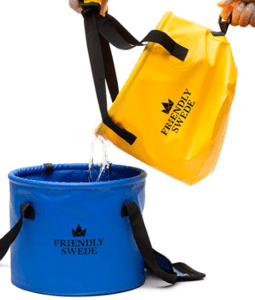

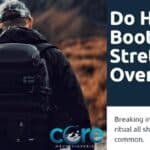

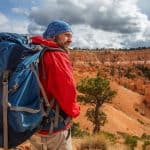



Thank you for the information on washing clothes. Use a breathable storage bag for keeping your dirty clothes in. A breathable bag is better so odor does not build up.
That’s a great tip, Teresa!